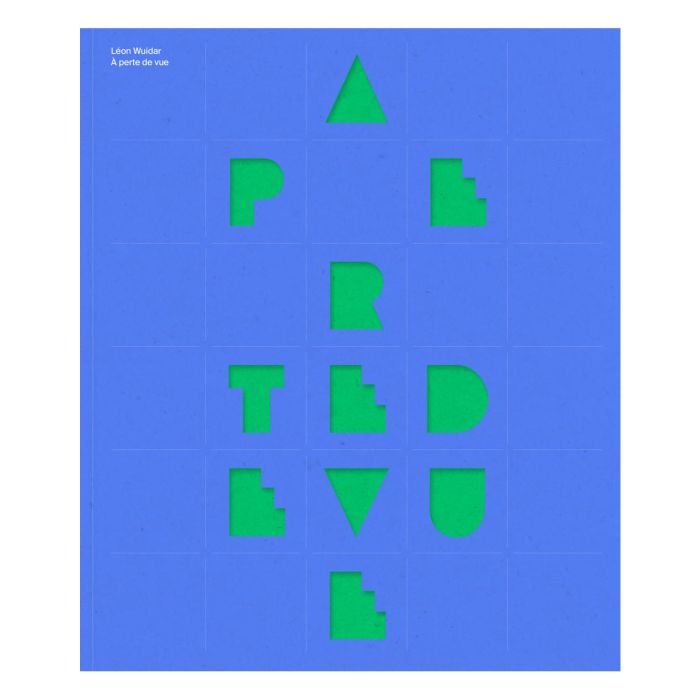My Cart
Your cart is empty
Looks like you haven't made your choice yet.
- Subtotal
A perte de vue - Léon Wuidar

- MACS - Grand Hornu
- Expo: 26/9/2021 - 30/1/2022, Macs, Grand Hornu, Charleroi
- by Hans Ulrich Obrist, Denis Gielen
More Information
| Publisher | MACS - Grand Hornu |
|---|---|
| ISBN | 9782930368795 |
| Author(s) | Hans Ulrich Obrist, Denis Gielen |
| Publication date | October 2021 |
| Edition | Swiss binding |
| Dimensions | 240 x 210 mm |
| Illustrations | 150 col. & bw ill. |
| Pages | 200 |
| Language(s) | Eng/ French edition |
| Exhibition | Macs, Grand Hornu, Charleroi |
Description
Practising an art that has been built up assiduously and not without a few notes of humour, in the house designed for him in the 1970s by the architect Charles Vandenhove, for whom he has also created certain artistic integrations, the Liège artist Léon Wuidar (°1938) has produced a body of work that is as coherent as it is surprising. After the Museum Haus Konstruktiv in Zurich, the MACS is staging a major retrospective which brings together a number of his paintings, collages and sketchbooks created between 1962 and the present day. With its title À perte de vue (As Far as the Eye Can See), the exhibition emphasises the immense labyrinth of his oeuvre, as well as the "smiling rigour" of an artist who plays with lines and colours, words and objects.
In the 1990s, at the time when digital arts were emerging, Tamara Laï was one of the first Belgian artists to use the CD-ROM and the Web as supports to develop multimedia, interactive works which stood out through their poetic hypertext and rhizomatic narrative. Through her short, experimental road movies and subsequent, prolific video poems, she captured the experience of her journeys and encounters in the moment, reworked them with subtle special effects and shared them with these close yet distant virtual communities, whose members sometimes took part in her videos, often after chance meetings on the Web. Although her websites, cam & chat performances and videoconferences form a relatively ephemeral oeuvre and are selected regularly by international festivals, the MACS has chosen to focus on her videos, in a device that highlights the poetic blend of interwoven sensations and affects, images and sounds.
The artist lives and works in Liège, Belgium
Pratiquant un art construit avec assiduité et quelques gouttes d'humour, dans la maison que lui dessina dans les années 1970 l'architecte Charles Vandenhove, pour lequel il réalisa également certaines intégrations artistiques, le peintre liégeois Léon Wuidar est l'auteur d'une œuvre aussi cohérente que surprenante à laquelle le MACS consacre, après le Museum Haus Konstruktiv à Zurich, une importante rétrospective qui réunira de nombreux tableaux, collages et carnets de dessins réalisés entre 1962 et aujourd'hui. Intitulée À perte de vue, l'exposition met en lumière l'immense labyrinthe de l'œuvre ainsi que la « rigueur souriante » d'un artiste jouant avec les lignes et les couleurs, les mots et les choses.
Redécouvert il y a quelques années, Léon Wuidar a été exposé en 2019 à la White Cube Gallery à Londres et au Museum Haus Konstruktiv en 2020. A perte de vue est la première exposition muséale d'envergure consacrée au peintre liégeois en Belgique. Le livre, outre un essai de Denis Gielen, directeur du MACS contient également une longue interview menée par le célèbre critique d'art Hans Ulrich Obrist dans laquelle il parle de sa pratique assidue de la peinture depuis plus de quarante ans, de son amour pour Paul Klee mais aussi de son grand intérêt pour l'architecture et de sa maison de style brutaliste qu'il commanda à Charles Vandenhove dans les années '70. Cette monographie dont le graphisme s'inspire directement des techniques de Léon Wuidar permettra au lecteur de s'immerger dans l'univers pictural passionnant de l'artiste.
Né en 1938 à Liège, Belgique
Vit et travaille à Liège, Belgique
Practising an art that has been built up assiduously and not without a few notes of humour, in the house designed for him in the 1970s by the architect Charles Vandenhove, for whom he has also created certain artistic integrations, the Liège artist Léon Wuidar has produced a body of work that is as coherent as it is surprising. After the Museum Haus Konstruktiv in Zurich, the MACS is staging a major retrospective which brings together a number of his paintings, collages and sketchbooks created between 1962 and the present day. With its title À perte de vue (As Far as the Eye Can See), the exhibition emphasises the immense labyrinth of his oeuvre, as well as the “smiling rigour” of an artist who plays with lines and colours, words and objects.
In the 1990s, at the time when digital arts were emerging, Tamara Laï was one of the first Belgian artists to use the CD-ROM and the Web as supports to develop multimedia, interactive works which stood out through their poetic hypertext and rhizomatic narrative. Through her short, experimental road movies and subsequent, prolific video poems, she captured the experience of her journeys and encounters in the moment, reworked them with subtle special effects and shared them with these close yet distant virtual communities, whose members sometimes took part in her videos, often after chance meetings on the Web. Although her websites, cam & chat performances and videoconferences form a relatively ephemeral oeuvre and are selected regularly by international festivals, the MACS has chosen to focus on her videos, in a device that highlights the poetic blend of interwoven sensations and affects, images and sounds.

A perte de vue - Léon Wuidar
